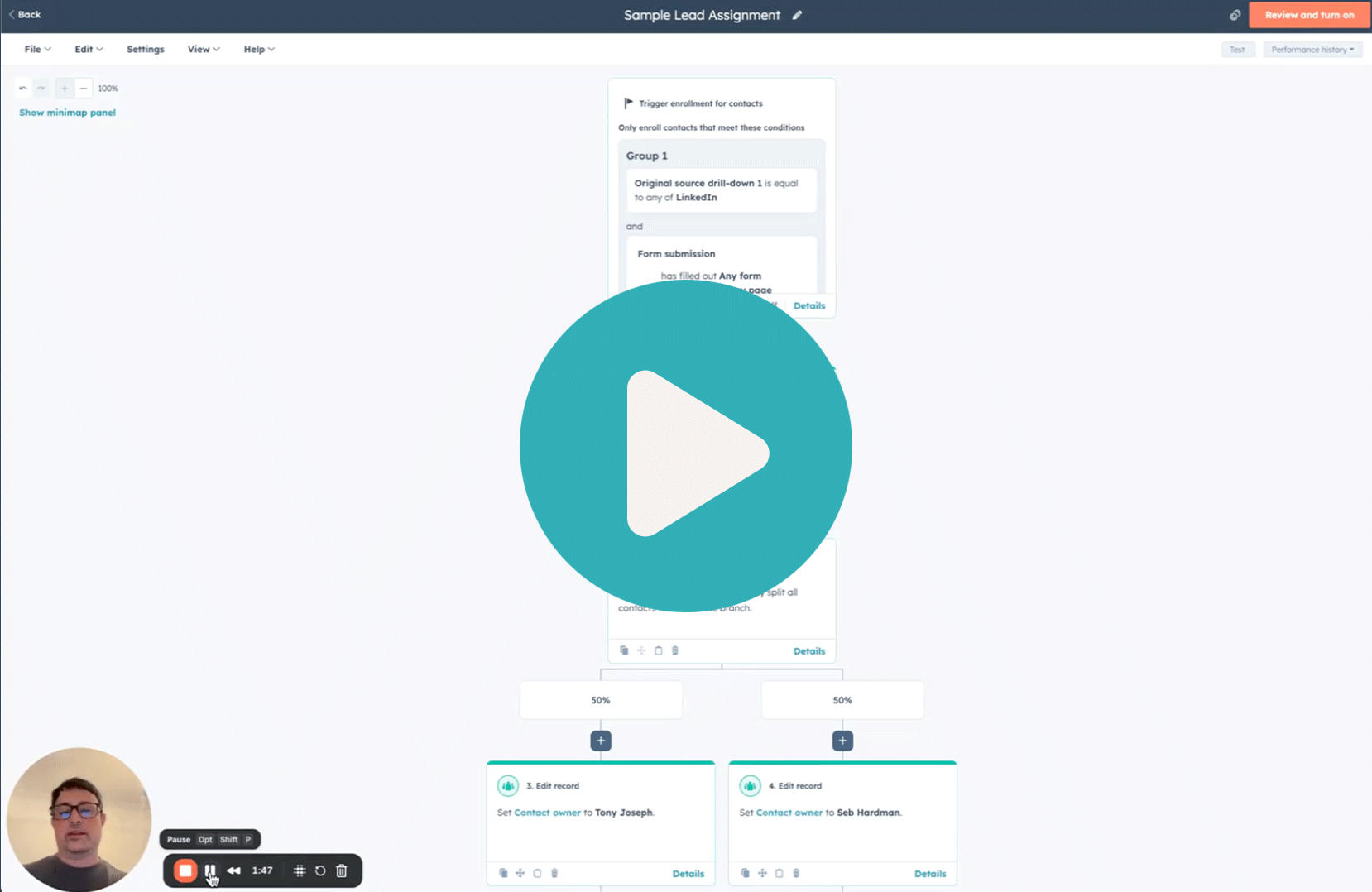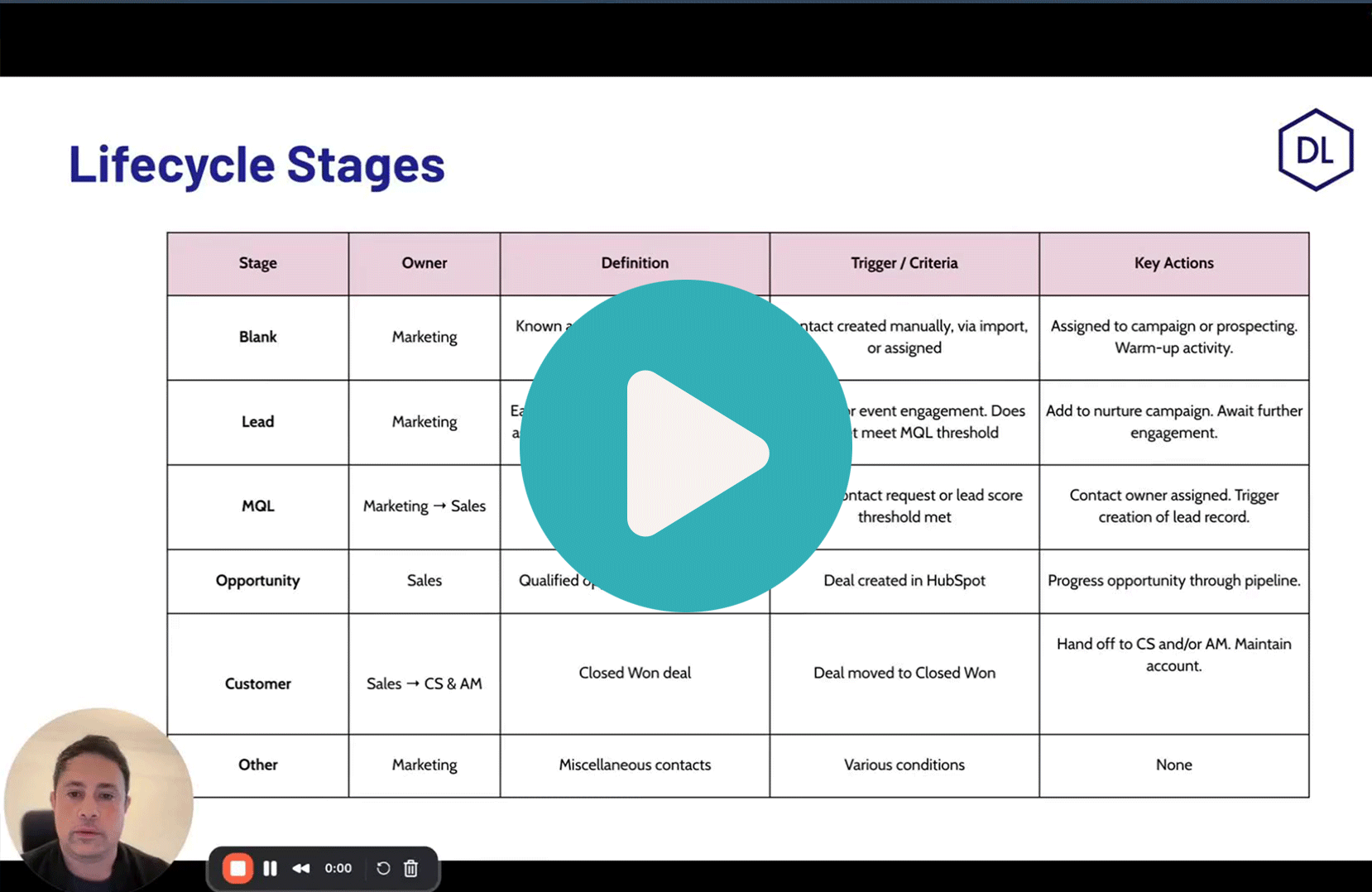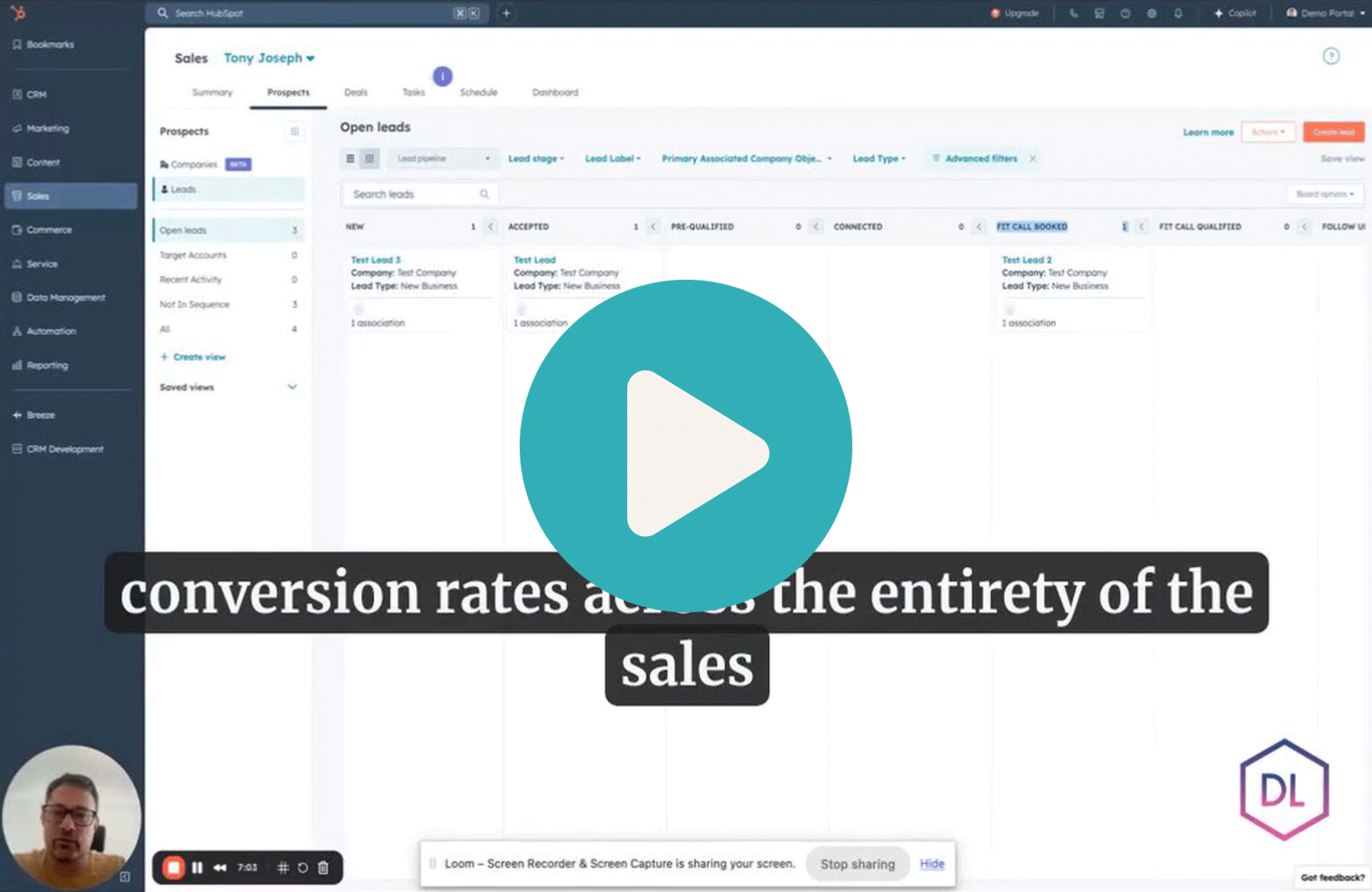B2B Sales Prospecting Guide
How to use outbound sales prospecting to grow your business
When it comes to B2B sales prospecting, the time crunch countdown begins each day of every week of every month. It’s the one aspect of sales that just never changes.
This is because sales essentially boils down to two things:
- Numbers
- Time
And those two things often go hand-in-hand. While racing to hit quota against that clock, we can save time and maximise our numbers by investing in the right technologies, processes, activities, and skills.
Truth is, sales is changing quickly. As sales conversations grow ever more buyer-focused, sales reps have begun developing their own hacks, techniques, and processes for prospecting.
That’s where this guide comes in...
In this guide, we’ll outline the various processes and key strategies for outbound prospecting -- the phase of selling that often consumes the most time and energy (and is the most crucial to get right).
Shortcuts
What is prospecting?
Sales prospecting techniques
THE INBOUND METHODOLOGY
A GUIDE TO PROSPECTING
SALES PROSPECTING TOOLS
What is prospecting?
Prospecting is the process of searching for potential customers, clients, or buyers to gain new business. The end goal is to move prospects through the sales funnel until they eventually convert into revenue-generating customers.
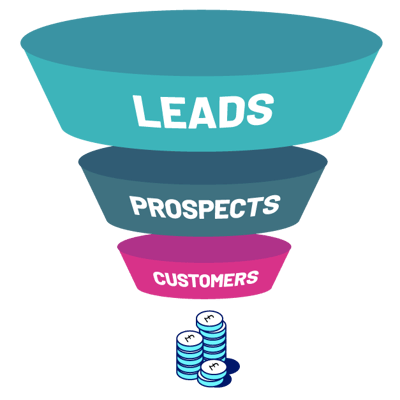
You may have heard the terms ‘lead’ and ‘prospect’ both used in sales prospecting, but what exactly are they and what is the difference?
Leads: Potential customers who have expressed interest in a company or their services through behaviours like visiting our website, subscribing to a blog, or downloading an ebook.
Prospects: Leads become prospects if they are qualified as potential customers, meaning that they align with the persona of the target buyer. A prospect may also be classified as a potential customer who has limited or no interaction with our company, but they would not be considered a lead.
Leads or prospects, the end goal is the same: Nurture potential customers until they buy your product or service.
Sales prospecting techniques
As the sales environment matures, we’re seeing a shift in methodology as reps no longer have to choose between inbound or outbound prospecting.
Here’s a breakdown of the big differences in the two methodologies.
Outbound prospecting
There are two types of outbound prospecting:
Cold Outreach - Unsolicited emails or calls to sell a product or service. In the B2B world, companies can only do this if the prospect on the other end has a ‘legitimate interest’ in your product or service. Otherwise you’ll find yourself in breach of GDPR rules which can get you in hot water.
Social Spamming - Unsolicited social media messages to sell a product or service. This approach is very commonly seen in LinkedIn in particular, where sales reps use InMail or direct messaging (if connected to the prospect) to contact one of their targets.
Without any prior history with a contact, the research stage takes a significant amount of time. There’s far less context for us when we’re ready to reach out to establish a connection which means the sales rep needs to have a very strong opening introduction and compelling reason to engage (e.g. share a resource that would be of value to the prospect).
Inbound prospecting
On the inbound side, there are two key approaches:
Warm Emailing - Warm emails to explore a relationship with a lead who has already expressed familiarity with your product or service. For example, they may have downloaded a content asset, requested a brochure, or filled out some details on your onsite chatbot.
Social Selling - Using social media to explore a relationship with a lead; sales reps can offer value to prospects on social media by answering their questions and introducing them to useful content.
The research process for these approaches is typically shorter as we already have some of contact information and interaction history. This gives us context about the prospect’s interests or prior behaviour, allowing us to develop more personalised outreach.
Example: “Hi John, I’m reaching out because I noticed you were looking at our ebook on improving sales productivity.”
The inbound methodology
Attract, Engage, and Delight
So which approach do you take? We recommend that you use the inbound methodology for sales prospecting with a responsible approach to outbound tactics like cold calling and cold outreach.
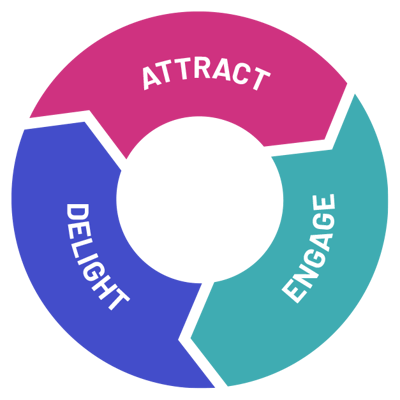
Before we make a purchase decision as a buyer, 60% of us rely on word-of-mouth, friends, and social media; 49% on customer references; 47% on analyst reports and recommendations; and 44% on media articles.
Before a salesperson even has a chance to contact a prospect, he or she is already 57% of the way through the sales process.
This is why using inbound and responsible outbound sales techniques together is a better method for success in this new realm of buyer awareness.
A guide to prospecting
50% of sales time is wasted on unproductive prospecting and we don’t want you to fall into that sales statistic.
.jpg)
That’s why we recommend the inbound way and put together a basic framework that applies to all sales processes. We understand that everyone has their own approach, so we’ve also weaved in personal prospecting tips and tricks from the best salespeople we know.
Pick and play with whatever works best for you!
Step 1 - Research
This is by far the most important aspect of prospecting. We must make sure that we’re qualifying our prospects to improve our chances of providing value to them or their business.
In this stage of prospecting, we’re looking to accomplish a few goals:
- Decide if the prospect is workable.
- Qualify and begin ranking prospects.
- Find opportunities to develop a connection through personalisation, rapport building, and trust development.
To do this effectively, sales and marketing need to be working symbiotically. Marketing needs to be generating a high quality set of leads based on the ideal customer profile. Sales need to have the collateral and context about the needs and pain points of those leads to be able to move them further down the pipeline.
Have you identified key stakeholders?
There are two types of people involved on the other end of our sales process: decision-makers and influencers.
Influencers may not have the power to buy, but they’re often the ones that will be using the product and thus can become our biggest internal advocates. If we get them to rally around our offering, they can make a compelling case to decision-makers before we even speak with them.
Decision-makers are, of course, the ones that either approve or reject the buy. We can ask these questions to determine the decision-making process: Will anyone else be involved in this decision? Does this purchase come out of your immediate budget?
Do you have familiarity with the market?
We’re likely to be more familiar with certain types of companies, markets, or industries than others. Our pitch and sales techniques are also likely to be more refined with markets we feel comfortable talking about, so we should rank these prospects first.
Value-added prospects who we can offer more value to are more likely to buy. For example, if we’re selling basic digital marketing services and we see that our prospect already has a robust web presence, the probability we can create tremendous added value is low.
Do they have an awareness of our offering?
Our prospects will likely have varying levels of knowledge about our product or services. The more awareness they have, the more likely they are to see the value in our offering and become customers. If a prospect has visited our website, subscribed to our blog, or posted content about something related to our offering, they probably know a lot about our company or service.
Based on our research, we should have a fine-tuned profile of our target customer, and every company or individual on our prospect list should meet those criteria.
Step 2 - Prioritise
Prioritising our prospects can save us time and make sure we’re dedicating our strongest efforts to prospects that are most likely to become customers. Levels of prioritisation will vary between each type of sales organisation and each individual salesperson, but the main idea is to create a few buckets of prospects based on their likelihood to buy and focus on one bucket at a time.
Let’s break down the qualifying dimensions used in our list above (and any added relevant dimensions) into percentages between 1% and 100% based on how important they are to the sales process.
For example, size of opportunity is probably more important to us than timing when closing a deal, so it would receive a 70% whereas timing would receive a 5%.
Now we can assign a value between 1 and 100 to these dimensions for each prospect in our list. Once we complete this step, we can multiply each prospect’s value by the percentage weight we gave to the dimension. Add up these dimension scores until each prospect has a total score. And now our entire list is ranked.
Step 3 - Prep the outreach
The end goal of this step is to gather in-depth information on our prospects to hone our pitch and personalise our outreach. So first, we must find what our prospects care about. We do that, by creating buyer personas. Fictional buyers who have needs and pain points that our products and services can solve.
Once we’ve learned more about our prospect’s business and role, we need to find a reason to connect. Do we have mutual connections? Has there been a trigger event? Have they recently visited our website? If so, which search terms drove them to our site? Which pages did they look at?
If we want to get more high-level with our prep, we can create a decision map to outline our prospect's options and end-goals. This will help us better handle any objections and personalise a pitch that resonates with their primary objectives. We could also conduct a competitive analysis to determine how we can better position our company's service or product within the industry and how we can combat prospects' objections.
Step 4 - The first touch
Whether calling or emailing, our outreach should be highly tailored to our prospect’s particular business, goal, industry.
.jpg)
Keep these general tips in mind when contacting a prospect, whether on the phone or through email:
- Personalise - reference a specific problem that the prospect is encountering with a specific solution.
- Stay relevant and timely - make sure the issue a prospect is trying to solve is still relevant to him or her and their team.
- Be human - no one likes to communicate with a professional robot so add in real touches that allow us to make a connection on a deeper level.
- Help, don’t sell - give value and ask for nothing in return, such as offering a free audit or content.
- Keep it casual - stay natural and as non-salesy as possible.
In terms of establishing contact, we must decide between email or phone communication. Some of us will initially jump on the cold email approach while others will dive into the cold call. This strategy will vary based on what each salesperson feels most comfortable with, but let’s quickly review pros and cons to both.
Email
Pros:
- Visual
- Allows prospect to consider our offer
- Gives prospect adequate time to research our company and product
Cons:
- Email is a cluttered space so it may be harder to grab a prospect’s attention.
- Emails are easily deleted and forgotten.
- We may have to follow up multiple times before getting a response.
Phone
Pros:
- Calls are less common than email, so they can grab a prospect’s attention quickly and more easily.
- Immediately establishes a more intimate connection and offers salespeople the chance to develop rapport.
- Often more timely than email communication and can speed up the time it takes to close a deal
Cons:
- Some prospects may feel overwhelmed by a call and thus be less inclined to consider a pitch or schedule a second meeting.
- There’s no guarantee a prospect will pick up.
- Voicemail can often be as cluttered as email.
But, how do we leave a voicemail or send an email that prospects want to respond to? Let’s dive into the dos and don’ts of each communication method below:
The warm email
If we’re looking to send a first-touch email that gets opened, there are some essentials that we must include:
- Engaging subject line - The subject line has to pique the prospect’s interest while avoiding cliché hooks.
- Personal opening line - We should begin our cold email by saying something about them, not about us. After all, this process is about finding the prospect’s pain points and determining a way to add value to their business or processes.
- Creating a connection - Now we have to make the connection. In our opening, they learn why we’re reaching out to them, but now they need to know why they should care about what we do.
- Clear call-to-action - Suggest a concrete time to connect or ask a close-ended question to make it clear that the ball is in their court. Try using one of these lines: “Do you have ten minutes to catch up tomorrow?” or “Are you available for a 30-minute call on Tuesday between 9-11 a.m.?”
If we decide to call a prospect, whether in conjunction with an email or not, we can follow this basic structure for the call:
The prospecting call
- Establish rapport - We shouldn’t shy away from personal conversations, like asking how a prospect’s weekend was or what team they’re rooting for in the game tonight. These intimate touches help us develop a more meaningful relationship with prospects and enhance our likeability which, hopefully, means a prospect will be more likely to buy from us.
- Leverage pain points -Dive into their pain points during the call. By the end of the conversation, we should know all of their primary business challenges and the underlying causes associated with them. Once we have an understanding of these key issues, we can better position our product or services to solve them.
- Create curiosity -Ask questions about their business. Ask more than tell. This conversation is about them and understanding their needs and problems. The less we talk about our business and product, the more our prospect will be interested to hear the final pitch.
- Wrap it up - Find a calendar time between 24-48 hours after the discovery call to book a follow-up meeting. Try this line: “Would you have 30 minutes to follow up this week? My colleague, John, will join us -- he’s an expert in X, Y, Z. My calendar’s open, what works best for you?”
Step 5 - Iterate
Keep notes throughout this process to assess what activities generated value for the prospecting process and which wasted time.
After each contact with a prospect, you should assess how well you think you:
- Uncovered challenges
- Helped create well-defined goals
- Confirmed availability of budget
- Understand decision-making process
- Determined consequences of inaction
- Identified potential results of success
This self-reflection will help us improve our calling techniques in the future.
Sales prospecting tools
As a HubSpot partner, we support our clients’ sales efforts by giving them the tools, processes and collateral to create opportunities and close deals faster than ever.
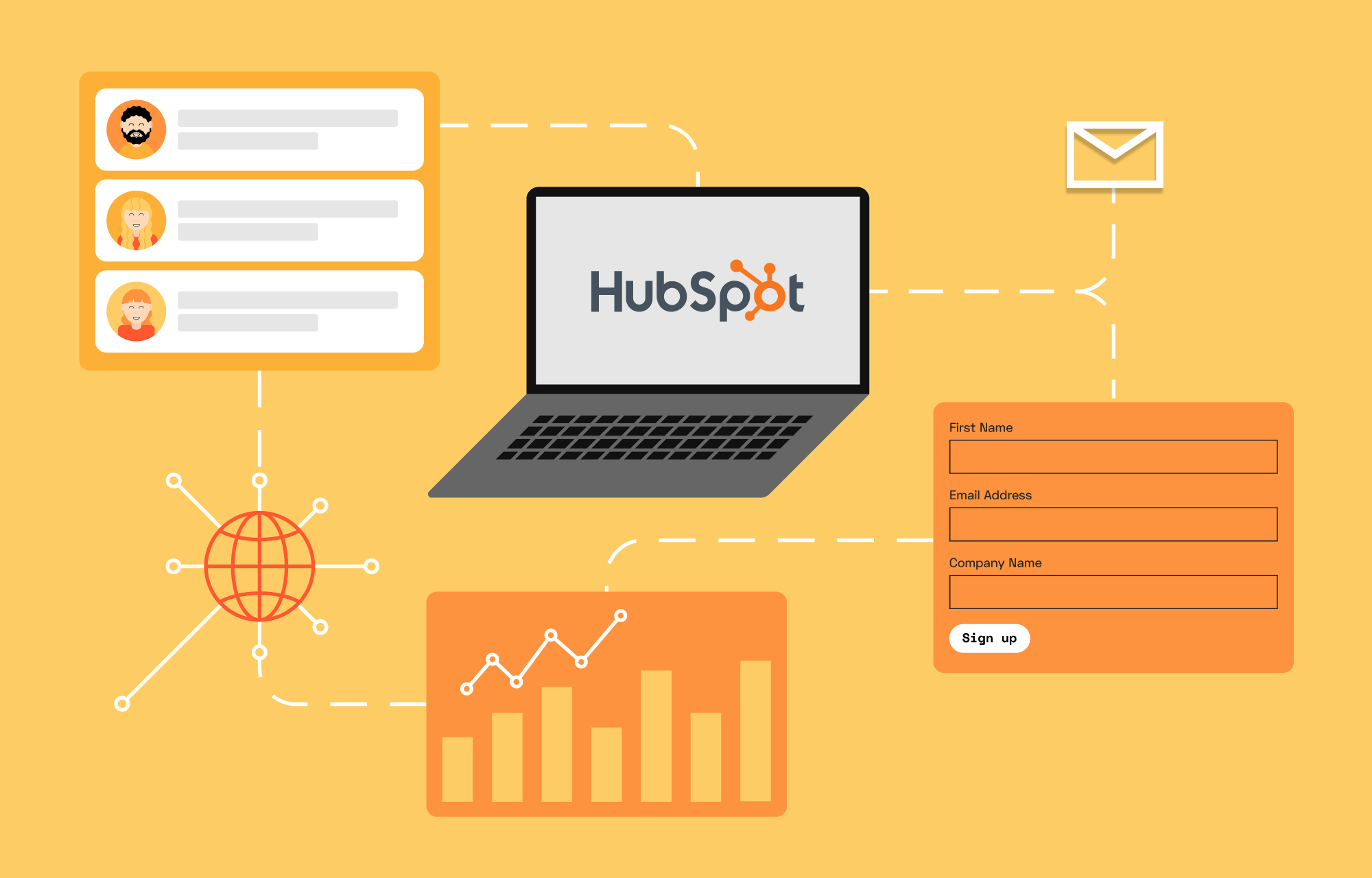
Here’s three HubSpot tools that are integral to successful sales efforts:
HubSpot CRM
HubSpot’s CRM allows users to keep track of sales activity and source new prospects.
How to use it: Surface warm prospects who have already visited our website. Store contacts and companies, track deals and easily manage tasks such as follow-ups and meetings.
HubSpot Connect
Connects the web apps you use to automate tedious tasks.
How to use it: Search the integration library to connect the apps and web services you use every day to your HubSpot account.
HubSpot Sales Hub
Use email tracking to know when prospects open emails, click on links, or open attachments. HubSpot Sales also offers detailed contact information right in your inbox and allows you to schedule emails to be sent when you know your prospect will be most likely to open them.
How to use it: If we see that a prospect is viewing an email we sent two weeks ago, we can follow up with information related to what they’re viewing, or email them to set up another meeting.
Conclusion
Prospecting doesn't have to be a pain -- and it doesn't have to be annoying for your prospects. Adopt a few of these strategies into your workflow, and enjoy better prospecting and better results.
Looking to get started with sales prospecting for your business, but not sure where to begin?
Explore our sales enablement services here or get in touch with us for a free assessment with our strategists.

